
Setting Intro
The World
In the land known only as Progeny, good and evil are simpler than we may be used to. There are some who wish for destruction and domination. These entities are evil, imbued with the ancient spirit of the Demon King. Not all forces of hostility are irredeemable, but these are. Unsophisticated beasts, united only in their dedication to assaulting the innocent, these forces of evil have a wide-reaching impact on Progeny's people. Besides a select few who choose to take up the mantle of heroes and adventurers, Progeny's people live simple lives, doing their best to live in spite of these monsters of evil and calamity.
Foreign Lands
Progeny is comprised of 3 large continents, each separated by a large ocean. The lands of Hyrule, Holodrum, and Termina have little, if any, contact or communication with one another, save for the very well-traveled adventurers who have come across technology or magic sufficient to cross the great oceans. The 3 continents have similar flora, fauna, peoples, and currency, though natives would certainly make significant distinctions like names, the anatomy of the left knee, and other aspects indistinguishable to foreign onlookers.
We Focus on Hyrule
Hyrule is by far the most populous land, with the best-kept records, so most legends and stories feature the land of Hyrule and its namesake kingdom. This document features setting details specific to Hyrule, but that's not to imply similar details don't also exist for Holodrum and Termina. If you choose to play in Holodrum or Termina, feel free to use Hyrule's setting details or change them as you see fit.
Adventures Across Time
The Legend of Zelda spans different eras and different possible timelines. Hyrule itself changes throughout the eras, but the major actors are always familiar. There is always the triforce, and those who seek its power, whether their motivations be pure or otherwise. Your adventure will be marked by an era (or perhaps by more than one), but no events are set in stone. The Hero during your era may die, triumph, or be altogether irrelevant.
$ Hyrulean Currency $
The currency of Hyrule is the rupee. Rupees come in different colors, corresponding to their rarity, and by extension, their value. All rupee gems have roughly the same weight - 50 physical gems weigh 1 pound, regardless of the value of those gems. As indicated below, 1 rupee can be treated as equivalent currency to 1 silver piece in DnD. Optionally, rupee weight can be tracked more simply by using the rule of thumb that roughly 1000 rupees weigh 1 pound.
| Color | Value | Equivalence |
|---|---|---|
| Green | 1 Rupee | 1 sp |
| Blue | 5 Rupees | 5 sp |
| Yellow | 10 Rupees | 1 gp |
| Red | 20 Rupees | 2 gp |
| Purple | 50 Rupees | 5 gp |
| Silver | 100 Rupees | 1 pp |
| Gold | 300 Rupees | 3 pp |
* Religion in Hyrule *
Religion in Hyrule is complex, and very few are familiar with the complete pantheon of known gods and spirits, let alone all the deities who have yet to make their presence known. Below are the deities and corresponding information basically all Hyruleans are familiar with. Knowing more details, understanding, and communicating with other beings may require a successful Religion or Arcana check, depending on the being. Failing a check in this way on certain beings may cause any number of catastrophes to befall the naive or inexperienced acolyte.
The Golden Goddesses
Hylia
One of the 4 goddesses who created Progeny, Hylia is the most commonly worshiped goddess throughout Hyrule. Usually depicted as a human woman with pointed ears and white robes holding a golden lyre, Hylia is associated with time.
Din
One of the 4 goddesses who created Progeny. Usually depicted as a featureless woman of red light, Din is associated with power.
Nayru
One of the 4 goddesses who created Progeny. Usually depicted as a featureless woman of blue light, Nayru is associated with wisdom.
Farore
One of the 4 goddesses who created Progeny. Usually depicted as a featureless woman of green light, Farore is associated with courage.
Spirits of the Land
The Great Fairies
Not much is commonly known about the Great Fairies. There are conflicting accounts of their size and anatomy, and it's said that if you find a Great Fairy's abode, you'll receive a divine blessing. If you're lucky enough to endear yourself to a Great Fairy, they might grant you a mystical boon. The nature of these blessings and boons are a subject of great mystery.
Dinraal
An ancient, inscrutable dragon of fire. He is often seen roaming the skies above Northeastern Hyrule.
Naydra
An ancient, inscrutable dragon of water. She is often seen roaming the skies above Western Hyrule.
Farosh
An ancient, inscrutable dragon of lightning. He is often seen roaming the skies above Southeastern Hyrule.
The Moon Spirits
Mahina
The Western moon Mahina can be seen throughout Hyrule, and its phases are used to track the months.
The Wind Fish
It isn't commonly known where the Wind Fish got its name, considering it doesn't seem to have much to do with wind or fish. The Eastern moon is shaped like a giant white egg, with bright pink craters that sparkle at nighttime.
The Blood Moons
When Mahina and The Wind Fish both align full, the moons turn blood red, and the magical energy that flows into the world is at its peak. Crop growth is enhanced, monsters are reborn, and magic is more potent. During the Blood Moons, monsters have resistance to all damage from non-magical sources. Spells have double damage/healing, range, and duration, but all casters have disadvantage on concentration checks, even if they would have advantage from some other source.
The Spirit Eclipse
When Mahina and The Wind Fish both align new, the spirits are obscured from the material world. During the Spirit Eclipse, magical energy temporarily stops flowing into the world. New magic can't be created, and monsters are crippled. Monsters can't benefit from damage resistances, and they take double damage from non-magical sources. Healing magic is halved and casting leveled spells deals 1d4 necrotic damage to the caster per level of the spell slot expended. This damage does not force the caster to make a concentration check.
New Mechanics
Environmental Hazards
Progeny is home to various locales with different amounts of danger associated with their climates. In general, a character who spends time in extreme cold or heat without adequately protecting themselves with special clothing, potions, or other remedies must make a DC 15 Constitution saving throw once per round (or per scene if not in combat), gaining a level of exhaustion on a failure. In sufficiently volcanic regions, characters must make a DC 15 Dexterity saving throw once per round (or per scene if not in combat), catching fire and taking 1d6 fire damage on a failure.
Each time the saving throw is made, the DC raises by 1, and the DM may adjust the saving throw DC, number of exhaustion levels gained, and the damage dice to reflect more or less extreme environments. In volatile environments other than volcanic regions, the DM may change the damage type to reflect the environment (for instance, a region where a dark calamity harms all who enter may do necrotic damage rather than fire damage). The saving throw DC resets after 1 minute of uninterrupted rest while shielded from the hazard, but the exhaustion must be removed normally.
@ Special Combat Actions @
No Zelda media would be complete without some important combat actions, listed below. As always, these are common combat actions, provided to help create rulings for common situations, but players are free to get creative with their actions, and it is up to the GM to adjudicate their actions and any required rolls.
Flurry Rush - (action)
Use your action to do nothing but prepare. Upon being attacked next, if the attack is unsuccessful, you may use your reaction to make 2 melee weapon attacks on that creature immediately, assuming this is plausible (expires after 1 attempt or at the start of your next turn).
Parry - (action)
You must be holding a shield to parry. As a reaction when you are targeted by an attack, you may make an opposed Dexterity check. If you do, your shield does not add to your AC until the start of your next turn. You may add your proficiency bonus if you have the Shield Master feat. If the defender is successful, the attacker is parried and the attack is unsuccessful. A melee attacker drops their weapon. A ranged attack is deflected back at the attacker, who must succeed on a Dexterity saving throw or suffer their own attack damage. The DC for this saving throw is equal to 8 + your proficiency bonus + your Dexterity modifier.
Spin Attack (move + action)
Make a single melee attack against any number of enemies within your melee attack range. A spin attack takes both a move and action to perform.
Target Weak Point
Make a DC 10 Athletics or Acrobatics check to shift a successful attack to a creature’s weak point, assuming hitting the creature's weak point is plausible given your method of attack. You must know where a weak point is to target it, and different creatures may have higher DCs associated with their weak points. Unless otherwise specified, successfully hitting a weak point adds one damage die to the attack and stuns the enemy until the end of its next turn, and failing subtracts 1 damage die, potentially causing the attack to only do damage equal to your ability modifier, to a minimum of 0. A creature's weak point can't be targeted while it is stunned.
A critical hit stuns a creature in this way without the need for the ability check. You may opt to attempt the ability check anyway, which will add 2 damage dice in addition to the normal benefits of a critical hit, but failing will negate all the benefits of a critical hit, including the stunning effect.
Weapons
Durability
When a weapon is used in a way that could be reasonably expected to break it, the DM should determine how likely the weapon is to break, and have the player roll a d100. Each time you succeed this check imposes a -10 penalty the next time you make this check for the same weapon. Breaking a weapon on an enemy adds 1 damage die to the attack.
Movement
Wind Currents
Tailwind
Flying or gliding with a tailwind provides a +15 bonus to your corresponding speed.
Headwind
Flying or gliding into a headwind applies a -15 penalty to your corresponding speed unless you succeed on an Athletics check. If this would bring your speed below zero, you are blown out of the air, potentially taking falling damage.
Water Currents
Downstream
Swimming downstream applies a +20 bonus to your swim speed, assuming you have one.
Upstream
Swimming upstream applies a -20 penalty to your swim speed unless you succeed on an Athletics check. if this would bring your swim speed below zero, the negative value is the rate at which the current pulls you along in the opposite direction. You may need to succeed on a Dexterity saving throw to avoid running into rocks and taking bludgeoning damage, at the DM's discretion.
% Races in Hyrule ^
There are numerous races throughout Hyrule. The playable races listed below are the most common races seen throughout history, but they are certainly not the only ones. Besides the race options listed below, you may opt to play a character race native to DnD with your DM's permission, or you may work with your DM to develop mechanics for Zelda races not listed below. Keep in mind that certain DnD creature types have great significance in Hyrule, like fairies and dragons. Always consult your DM if you want to play a race not listed below.
Hylian
Hylians are a humanoid race blessed by the Goddess Hylia. They have pointed ears, but their other physical features vary widely. Hylians live all across Hyrule, and while they may not have access to any innate magical abilities, they enjoy a connection with the Goddess Hylia that grants them increased abilities, skills, and potential.
Humans and Hylians
Strictly speaking, Humans and Hylians are the same species. Hylians are descended from the Goddess Hylia, which gives them pointed ears and an innate connection with the gods. If you want to play as a round-eared human, ignore the "Blessed by Hylia" trait.
Hylian Traits
Ability Score Increase
Two different ability scores of your choice increase by 1. You can't raise any of your scores above 20.
Age
Hylians reach adulthood in their late teens and tend to live less than a century.
Size
Hylians vary in height and build, from barely 5 feet to well over 6 feet tall. Your size is Medium.
Speed
Your base walking speed is 30 feet.
Languages
You can speak, read, and write Common and Ancient Hylian.
Blessed by Hylia
The Goddess Hylia watches over you and ensures your growth. Do not take this trait if you are a round-eared human. You gain the following benefits.
- Gain 1 feat of your choice, with DM approval.
- You have proficiency in the Religion skill and one other skill of your choice
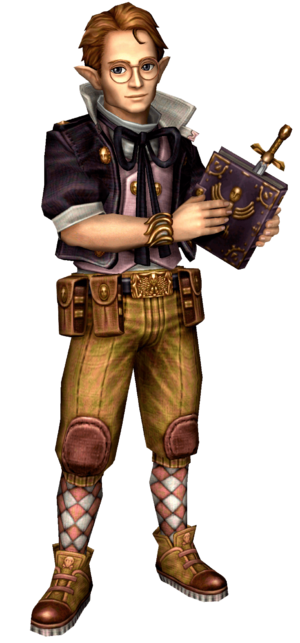
Zora
Zora are an amphibious race, born and at home in the water but comfortable on dry land. Humanoid in form, they can have skin colors of numerous colors. Some common skin colors are silver, blue, crimson, and violet. Long fins extend from the backs of their arms and legs, and their toes are webbed. Their heads extend backward and downward in the shape of a small shark's tail, commonly known as a Zora's hair.
Zora Traits
Ability Score Increase
Your Intelligence score increases by 2, and your Charisma score increases by 1. You can't raise any of your scores above 20.
Age
Zora mature at the same rate Hylians do and reach adulthood around the age of 20. They live considerably longer than Hylians, though, often reaching well over 200 years.
Size
Zora are significantly taller than most humans, standing between 6 and 7 feet tall and averaging about 200 pounds. Your size is Medium.
Speed
Your base walking speed is 30 feet.
Amphibious
You can breathe air and water, and you have a swimming speed of 40 feet.
Languages
You can speak, read, and write Common and Zora.
Lore of the Waters
You gain proficiency in History.
Blessed by Water
You have resistance to acid damage. You know the Shape Water cantrip. When you reach 3rd level, you can cast Create or Destroy Water at 2nd level once per long rest.


Goron
Gorons are native to mountainous and volcanic regions. While mostly humanoid, their skin is largely made of stone. They are technically omnivores, but they usually prefer to eat high-quality rocks, which they incorporate into their bodies. Gorons' round bodies and tough exterior allows them to curl up into a ball and roll at high speeds. Gorons are known for strictly disallowing outsiders in their villages, but they often make exceptions for helpful adventurers.
Goron Traits
Ability Score Increase
Your Constitution score increases by 2, and your Strength score increases by 1. You can't raise any of your scores above 20.
Hybrid Nature
You have two creature types: humanoid and elemental. You can be affected by a game effect if it works on either of your creature types.
Age
Gorons reach adulthood by age 12, and can live for up to 400 years.
Size
Your size is Medium. Gorons range from 6-8 ft tall, and can weigh anywhere from 300-500 pounds.
Speed
Your base walking speed is 30 feet.
Born of Rocks
Your body is literally made of stone, represented by the following benefits
- When unarmored, your AC is equal to 13 + your Constitution modifier.
- You have resistance to piercing damage and fire damage.
- You have advantage on saving throws against being poisoned.
- You can eat rocks.
- You are immune to disease.
Mountain Strength
You gain proficiency in Athletics.
Languages
You can speak, read, and write Common and Goron.
Goron Rolling
You can curl up into a ball and roll for a burst of speed. When you move on your turn in combat, you can double your speed until the end of the turn. Once you use this trait, you can't use it again until you move 0 feet on one of your turns. This trait can be used for longer periods if you take on levels of exhaustion, at the DM's discretion.


Rito
The Rito are an avian race who live in and around cold mountaintops. All Rito have birdlike features, including wings, feathers, talons and beaks. The Rito described here are assumed to have wings in addition to arms, coming out of their back. If you want to play a Rito with only 4 limbs, your DM may impose some restrictions while flying, such as limiting your somatic and material spellcasting or disallowing attack rolls and ability checks that would require your arms.
Rito Traits
Ability Score Increase
Increase your Dexterity score by 2, and increase your Wisdom score by 1. You can't raise any of your scores above 20.
Age
Rito mature at the same rate Hylians do and reach adulthood around the age of 20. They live considerably longer than Hylians, though, often reaching well over 200 years.
Languages
You can speak, read, and write Common and Rito.
Size
You are Medium. Rito heights vary widely, from 4 feet to 7 feet.
Speed
Your walking speed is 30 feet.
Flight
Thanks to your wings, you have a flying speed equal to your walking speed. You can't use this flying speed if you're wearing medium or heavy armor.
Darkvision
You can see in dim light within 60 feet of yourself as if it were bright light and in darkness as if it were dim light. You discern colors in that darkness only as shades of gray.
Blessed by Wind
You know the Gust cantrip. When you reach 3rd level, you can cast Feather Fall once per long rest. When you reach 5th level, you can cast Gust of Wind once per long rest. Your spellcasting ability for this trait is Wisdom.


Gerudo
The Gerudo are a race of female warriors who come from the western desert. All gerudo have dark skin, red hair, and either amber or green eyes. Only 1 male Gerudo is born every 100 years, so most Gerudo seek out male partners from other races in order to reproduce.
Gerudo and Gender
Apart from the one male Gerudo born every 100 years, Gerudo are exclusively female. This is completely independent from their gender identity. Generally speaking, gender roles aren't a part of Gerudo culture, but you may absolutely choose to play a Gerudo who identifies as a man, woman, non-binary, or otherwise.
Gerudo Traits
Ability Score Increase
Your Strength score increases by 2, and your Dexterity score increases by 1. You can't raise any of your scores above 20.
Age
Gerudo reach adulthood around the age of 16. They live up to 150 years.
Size
Gerudo range from under 6 to over 7 feet tall and have slender builds. Your size is Medium.
Fleet of Foot
Your base walking speed is 35 feet.
Skills of the Desert
You have proficiency in the Survival, Acrobatics, and Athletics skills. Desert sand that would count as difficult terrain doesn't count as difficult terrain for you.
Languages
You can speak, read, and write Common and Gerudo.
Gerudo Weapon Training
You have proficiency with the longsword, scimitar, shortbow, and longbow.
Blessed by Lightning
You have resistance to lightning damage. You know the Shocking Grasp cantrip. When you reach 3rd level, you can cast Witch Bolt at 1st level once per long rest. Your spellcasting ability for this trait is Dexterity.
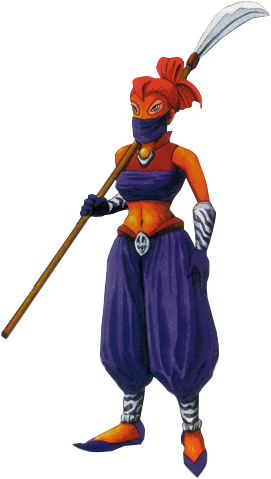

Twili
The Twili are a people who come from another world draped in perpetual twilight. Humanoid in form, they have red eyes, and skin in shades of green, gray, and black. Twili are separated into two distinct subraces, chosen when you choose this race: Dusk Twili and Dawn Twili.
Dusk Twili
Dusk Twili are associated with contemplation and melancholy, when the vibrant energy of the world sets with the sun. They typically don't have hair, and their eyes are a solid, beady red. Overall their features are more impish and they resemble humans less.
Dawn Twili
Dawn Twili are associated with boldness and aggression, a time of unfettered energy rising with the sun. They typically have bright orange hair, and their eyes and other features more closely resemble humans.
Twili Traits
Ability Score Increase
Your Charisma score increases by 2, and your Wisdom score increases by 1. You can't raise any of your scores above 20.
Age
Twili reach adulthood in their late teens and tend to live for about 120 years.
Size
Twili range from under 5 to over 6 feet tall and have slender builds. Your size is Medium.
Speed
Your base walking speed is 30 feet.
Superior Darkvision
Accustomed to the low-light conditions of Twilight, you have superior vision in dark and dim conditions. You can see in dim light within 120 feet of you as if it were bright light, and in darkness as if it were dim light. In darkness, you see in shades of gray and orange.
Sunlight Sensitivity
You have disadvantage on attack rolls and perception checks that rely on sight when you, the target of the attack, or whatever you are trying to perceive is in direct sunlight.
Twilit Step
As a bonus action, you can magically teleport up to 30 feet to an unoccupied space you can see. Once you use this trait, you must finish a long rest to use it again. When you reach 3rd level, your Twilit Step gains an additional effect based on your subrace; if the effect requires a saving throw, the DC equals 8 + your proficiency bonus + your Charisma modifier. The effects are as follows:
- Dusk. When you use your Twilit Step, each creature of your choice that you can see within 5 feet of you before you teleport must succeed on a Wisdom saving throw or be frightened of you until the end of your next turn.
- Dawn. Immediately after you use your Twilit Step, each creature of your choice that you can see within 5 feet of you must succeed on a Constitution saving throw or be blinded until the end of your next turn.
Languages
You can speak, read, and write Common and Twili.
Ancient Magic
All Twili have a deep connection with a dark magic. You know one cantrip of your choice from the Warlock spell list. When you reach 3rd level, choose one 1st level spell from the Warlock spell list which you can cast once per long rest without expending a spell slot. When you reach 5th level, choose one 2nd level spell from the Warlock spell list which you can cast once per long rest without expending a spell slot. You may not upcast spells using this feature. Your spellcasting ability for this trait is Charisma.
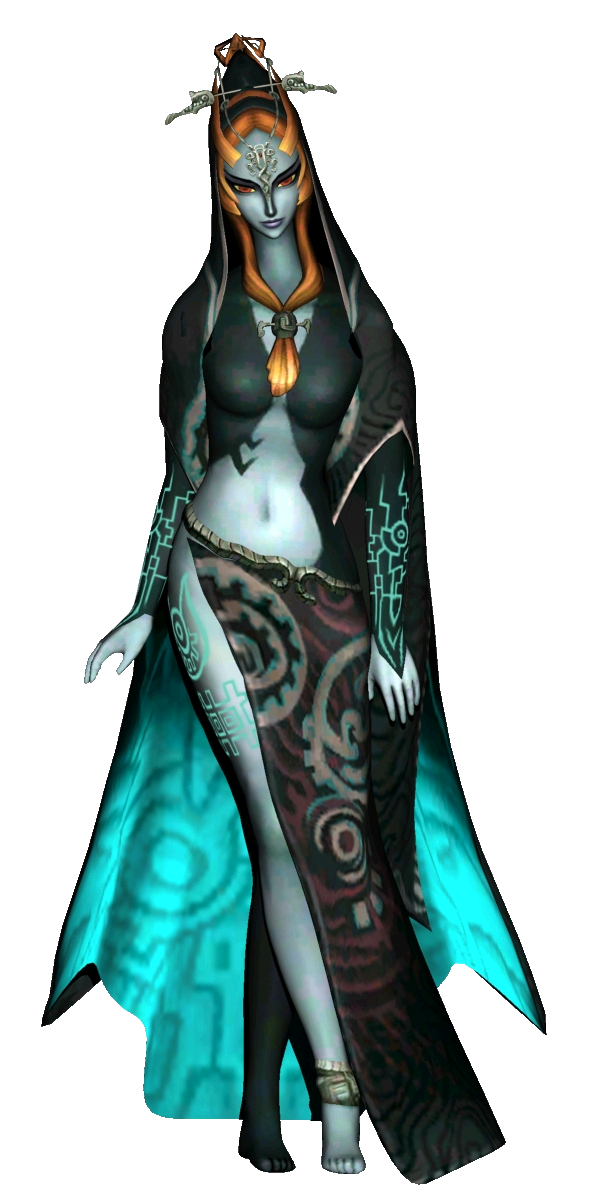
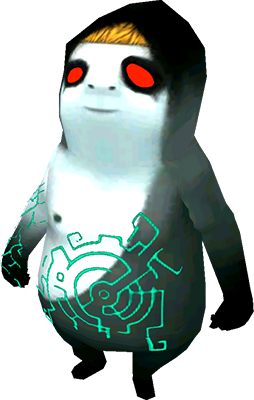
Sheikah
The Sheikah are a race of humanoids who were bred to serve the Goddess as assassins, spies, and mages in the ancient Demon War. Now they are spread out in numerous villages, cities, and outposts throughout Hyrule. Sheikah resemble Hylians, with light skin and pointed ears, but a Sheikah can always be identified by their red eyes and white hair.
Sheikah Traits
Ability Score Increase
Your Dexterity score increases by 2, and your Intelligence score increases by 1. You can't raise any of your scores above 20.
Age
Sheikah reach adulthood in their late teens and tend to live for about 120 years.
Size
Sheikah range from under 5 to over 6 feet tall and have slender builds. Your size is Medium.
Speed
Your base walking speed is 30 feet.
Darkvision
You have superior vision in dark and dim conditions. You can see in dim light within 60 feet of you as if it were bright light, and in darkness as if it were dim light. You can't discern color in darkness, only shades of gray.
Meditate
Sheikah do not sleep. Instead they meditate deeply, remaining semi-conscious, for 4 hours a day. While meditating, you dream after a fashion; such dreams are actually mental exercises that have become reflexive after years of practice. After resting in this way, you gain the same benefit a human would from 8 hours of sleep.
Watchful Shadows
You have proficiency in the Perception and Stealth skills.
Languages
You can speak, read, and write Common and Sheikah.
Sheikah Step
As a bonus action, you can magically teleport up to 30 feet to an unoccupied space you can see. Once you use this trait, you can't do so again until you finish a short or long rest. When you reach 3rd level, your Sheikah Step causes you to turn invisible until the end of your next turn. Attacking or casting a spell ends your invisibility.
Affinity for Magic
- You can cast Detect Magic and Identify once per long rest without expending a spell slot.
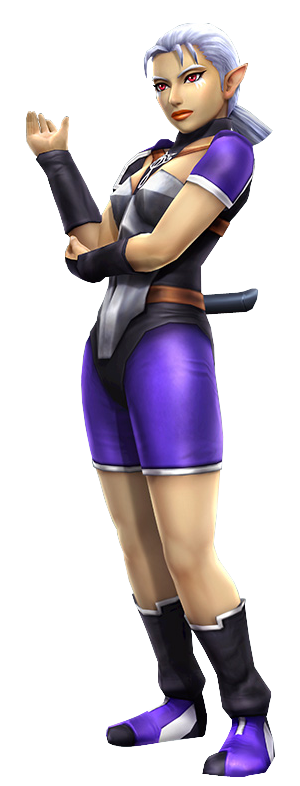

Deku Scrub
Deku Scrubs are small plant-based creatures who make their home in forests and underground burrows. Their bodies are made of wood, with solid orange eyes, and leaves that make up their hair. Deku Scrubs can be very territorial, spitting Deku seeds at intruders who come too close.
Deku Scrub Traits
Your Wisdom score increases by 2, and your Constitution score increases by 1. You can't raise any of your scores above 20.
Hybrid Nature
You have two creature types: humanoid and plant. You can be affected by a game effect if it works on either of your creature types.
Age
Deku Scrubs reach adulthood by 3 and live for about 80 years.
Size
Deku Scrubs range from 2 feet to 3 feet tall. You are Small.
Speed
Your base walking speed is 25 feet.
Deku Flowers
The leaves and flowers that grow from your body allow you to glide through the air. You have a glide speed equal to your walking speed. You can spend movement to travel horizontally through the air, moving up to your glide speed and falling 10 feet each turn. Any falling damage you take is calculated from the height where you stop gliding.
Burrowing
You can take the Hide action (or bonus action, if available to your class) to burrow underground in soft soil and forested environments. You have expertise in stealth under these conditions. When burrowed in this way (regardless of any stealth check), you can launch 10 feet + your Constitution modifier into the air as an action.
Deku Seed
Your arms are too brittle to be used for unarmed attacks. Instead, you can fire Deku seeds from your mouth at enemies. Your unarmed attacks are ranged attacks that use Dexterity with a range of 20/60.
One with the Forest
You have proficiency in Nature. You know the Druidcraft cantrip.



It's Dangerous
to Go Alone
Progeny and its kingdoms await whatever adventurers you have in store, whether gritty, epic, humble, or just plain weird. The sandbox is all set up - I invite you to come and craft brilliant castles, or gloriously wreck it all.
I am not in any way affiliated with Dungeons & Dragons, The Legend of Zelda, or any other Wizards of the Coast or Nintendo properties. The contents of this supplement were created for free out of love for the source material.
Art Credits
I tried my best to credit the art used whenever possible. If you see your art, and would like it credited or taken down, please let me know, and I'll do my best to accommodate.
- Front Cover: Conor Burke
- Race Images: Excerpted from official game art
- Twilight Princess
- Ocarina of Time
- Wind Waker
- Hyrule Warriors: Age of Calamity
- Back Cover: Alessandro (Yoru)